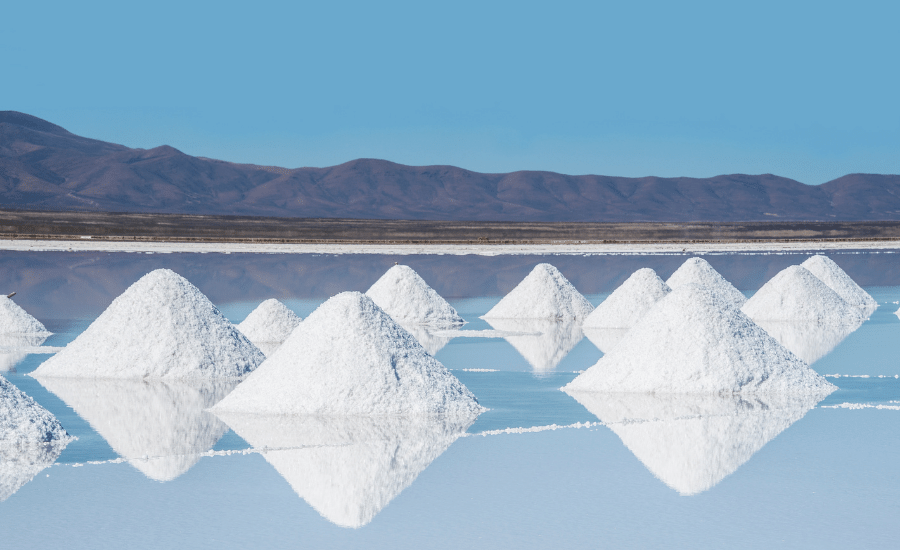
(S&P Global, 4.Aug.2023) — Argentina, the world’s fourth largest lithium producer, second in resources, has been cast as the promising supplier to leapfrog Chile in the short term, as it holds a strong pipeline of lithium projects close to coming online and set to unlock a wave of production of the key electric vehicle battery metal.
While the US and Europe increase downstream investments, it is a reality that the global race for South American critical minerals was given the start. Such movements on the west have been forcing China to intensify its search for upstream investments in South America and Africa, as it remains heavily reliant on imported lithium raw materials.
“If Argentina does not achieve its commitment as a major lithium chemical producer in the next few years, the EV revolution will be challenging,” said Joe Lowry, president of consulting firm Global Lithium during the Litio En Sudamérica (Lithium South America) Seminar, in Salta, Argentina, Aug. 9-10.
With over 1,700 attendees, double that of the previous year, the event’s key takeaways abide on the challenges and opportunities lying in Argentina to materialize such a big fate.
Argentina, Chile and Bolivia together sit over half of the world’s mineral resources under the salt flats on the high-altitude Andean plains. But strategies for developing it as potential reserves are diverging.
Bolivia’s untapped lithium resources has seen the state investing roughly $800 million in its strictly controlled salt flats, with a grid of ponds and an unfinished plant that it said will begin producing 15,000 mt/year of lithium carbonate equivalent this year.
Nevertheless, Chilean lithium operations are centralized to industry giants SQM and Albemarle, with no large expansion plans in the pipeline as the country recently unveiled plans for a state-led public-private model, thus spooking additional investors.

According to a study by the Chilean Copper Commission, or Cochilco, Chile could go from representing 32% of the market in 2020, to only 15% by 2030. In contrast, Zimbabwe, Argentina, Brazil, and the US would fiercely increase their shares.
Argentina, still with a more pro-market model, is home for over 30 mining projects in different stages and has largely been driven by private investments and regular permit approvals as the government looked to bring in more US dollars through mining exports.

The Argentinian lithium industry in the northern provinces of Catamarca, Salta and Jujuy, also known as the NOA region, is committed to investments worth $7 billion for the coming years, with strong growth projected for exports at $1.1 billion in 2023.
In 2022, the main destination for Argentinian lithium exports was China — 41.5% of total sales abroad — followed by Japan at 30.7%, South Korea 12.8% and the US 9%.
“We have to establish an autonomous national policy, which has nothing to do with the models adopted by Bolivia and Chile,” said Gerardo Morales, Jujuy province’s governor.
He recalled that “by article 124 of our National Constitution, natural resources belong to the provinces” and pointed out that “the way forward is our own, national model, with a central participation by the lithium-producing provinces”.
“Argentina is in an advantageous position because it´s years ahead of exploration phases, while other countries are just at the beginning,” said Ignacio Celorrio, President of Lithium Americas in Latin America, one of the shareholders of Minera Exar, which started the production stage of the Cauchari-Olaroz in Jujuy in June.
However, he called attention to the need of Argentinian miners’ to abide to proper quality standards.
“We must be a reliable supplier,” he said.
Infrastructure bottlenecks, technological advance
Argentina’s current 40,000 mt of lithium carbonate production could triple in the next year based on the current project pipeline or grow beyond expectations should direct-lithium-extraction technologies be well implemented and infrastructure bottlenecks are overcome.
In this way, sources from the Argentine ministry of mining, led by Fernanda Ávila, foresee that by end-2023 lithium production will have increased by at least 50% in just one year, and reach 60,000 mt.
In 2022, there were almost 38,000 mt, between what was produced in Sales de Jujuy, run by Alkem, and the Fénix project in the Salar del Hombre Muerto, in Catamarca, run by Livent — both expected to double in output to 42,500 mt in the years ahead.
However, the big leap could take place in 2024, when the production of 2022 could triple and reach 120,000 mt.
According to the portfolio of projects monitored by the ministry, there would be four new projects that would start up in the first quarter of next year — Tres Quebradas from the Zijin company in Catamarca, Centenario Ratones from Eramine in Salta, Sal de Oro from South Korea’s Posco in Salta and Catamarca and Mariana from China’s Ganfeng in Salta.
But the DLE paradox remains.
“DLE is a reality in Argentina since 1995,” said Daniel Chávez Díaz, CEO of Eramine South America, which currently uses a direct extraction process developed by its own company at its pilot plant in Salta.
“Our process achieves a yield of over 90%, with a processing period of about 24 hours, while the traditional process (natural evaporation in pools) offers less than 50% yield in 18 months.”
In contrast, Carlos Galli, senior director project development Latin America for Lithium Americas is a be a bit more “cautious about DLE”.
He said there were some sustainability challenges. “What about energy intensity, water impact? The reinjection of water is still complex and needs to be better studied.”
Due to projects’ location at high altitudes, the lack of proper ground logistics, power transmission lines or gas pipelines are just other challenges in addition to the chosen production route.
Price volatility all the way through
“This is the lithium decade”, several executives and analysts repeated during their speeches, citing that growing EV production will continuously drive demand for critical minerals and set a positive pricing landscape for miners in the coming years.
As of lithium the pricing range forecast by market participants for the next 24 months was said between $35,000/mt to $50,000/mt, with some volatility to remain derived from the developments of the Chinese EV policy, US IRA rules, recessions and supply uncertainties.
Moreover, as China increases captive lepidolite and other low-quality production, such moves may elevate the industry’s cost curve, thus favoring South American volumes in the seaborne market.
“Prices won’t be peaking forever, there will come a time of more stable prices,” said Guillermo Calo, managing director of Rincon lithium project in Argentina, owned by Rio Tinto.
He highlighted that China is moving forward with recycling technology, which may change the scenario a decade later.
____________________

